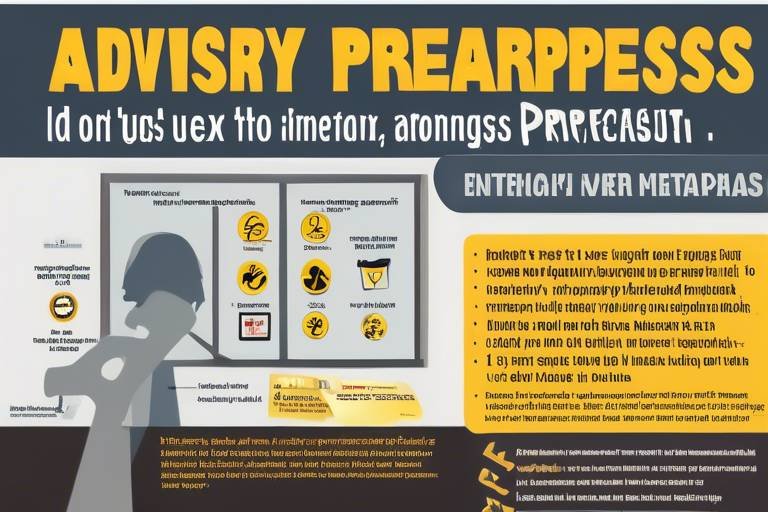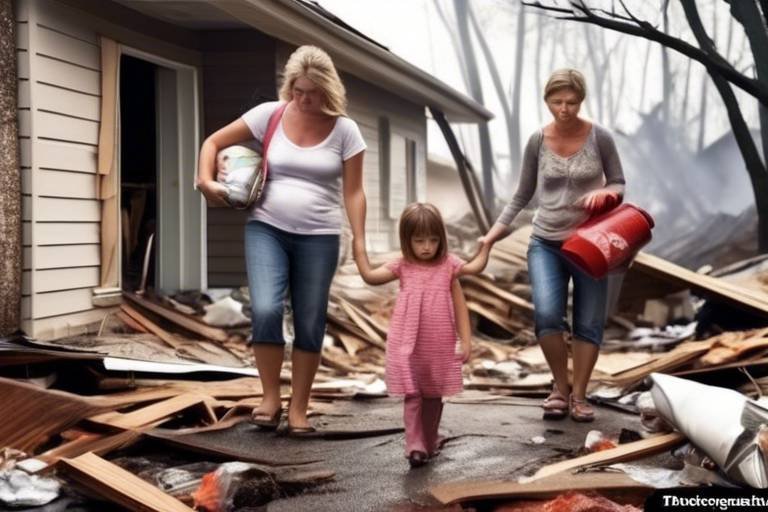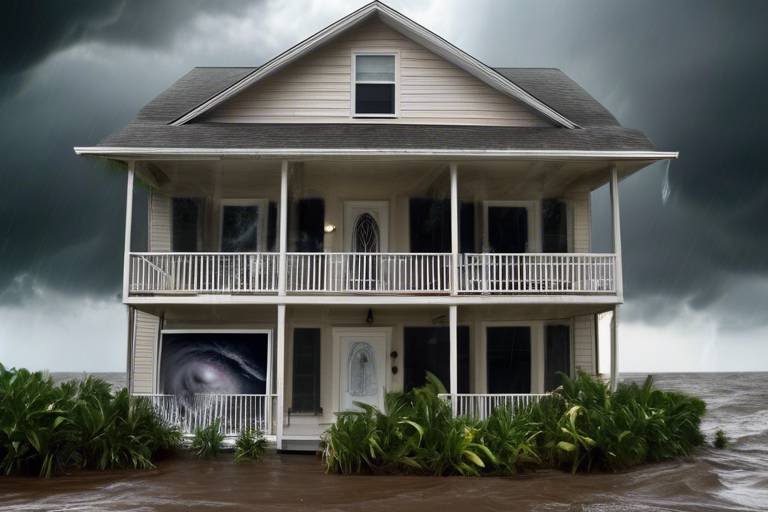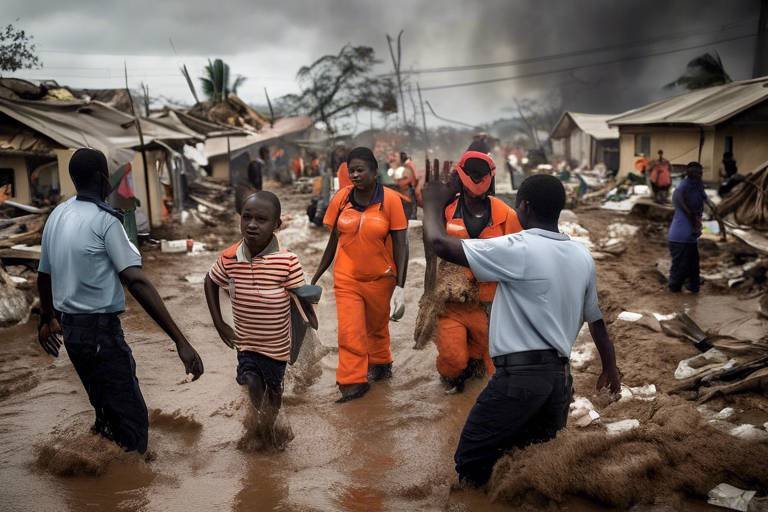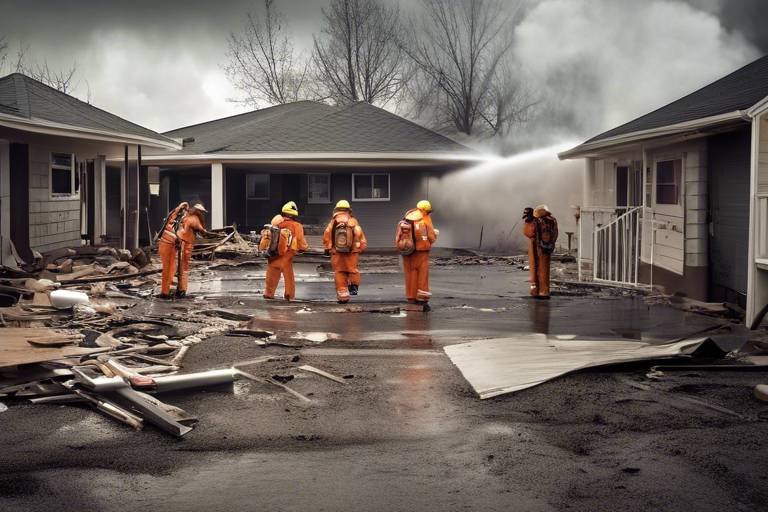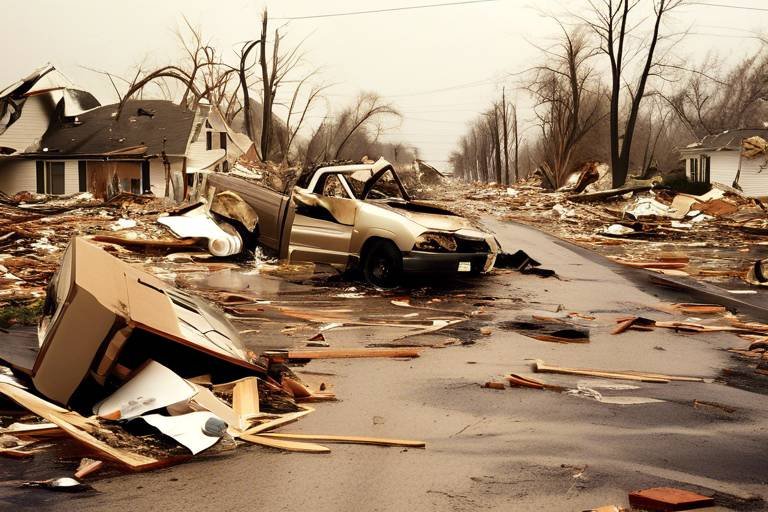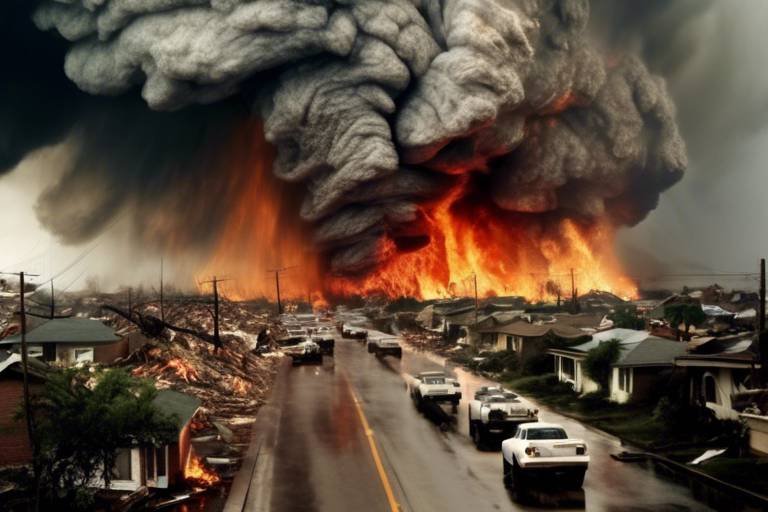Advisory Warnings and Emergency Preparedness
In today's world, the unexpected can happen at any moment, and being prepared is no longer just an option; it’s a necessity. Advisory warnings serve as critical alerts that inform us about potential hazards, from severe weather conditions to public health crises. Understanding these warnings can be the difference between safety and danger. Imagine being caught in a storm without knowing the risks ahead; it’s a scenario that can be avoided with the right information and preparation. This article dives deep into the importance of advisory warnings and outlines effective steps individuals and communities can take to bolster their emergency preparedness.
Advisory warnings are issued by various authorities to alert the public about potential dangers. These warnings can be related to natural disasters, health risks, or even technological hazards. By paying attention to these alerts, individuals can make informed decisions that protect not only themselves but also their loved ones. Think of advisory warnings as your personal compass in a stormy sea; they guide you toward safety and away from danger. Ignoring these warnings is like sailing without a map—risky and potentially disastrous.
Emergencies come in many shapes and sizes, and recognizing the different types can significantly enhance our preparedness. From natural disasters like hurricanes and earthquakes to public health emergencies such as pandemics, each situation requires a tailored response. Understanding the nature of these emergencies allows individuals to equip themselves with the necessary tools and knowledge to act swiftly and effectively. It’s like preparing for a marathon; you wouldn’t wear flip-flops, would you? Each type of emergency demands specific preparations.
Natural disasters are perhaps the most unpredictable events we face. They can strike without warning, leaving devastation in their wake. Familiarizing yourself with the various types of natural disasters, such as hurricanes, floods, and earthquakes, can significantly improve your community's resilience. Just as a tree bends but does not break in the wind, communities that prepare for these events can withstand and recover from the impacts more effectively.
Hurricanes are powerful storms that can wreak havoc on coastal areas. Understanding hurricane warnings is crucial for ensuring safety. When a hurricane watch is issued, it’s time to start preparing. This includes knowing your evacuation routes and having a plan in place. It's essential to act quickly, as the window for safe evacuation can close rapidly. Think of it as a race against time; the sooner you act, the safer you will be.
Earthquakes, on the other hand, can occur with little to no warning. This unpredictability makes it vital to have a plan in place. Securing heavy furniture, knowing safe spots in your home, and creating an emergency kit can save lives during an earthquake. Just like a well-prepared athlete practices for the big game, you too must practice your emergency response to be ready when the ground shakes.
Public health emergencies, such as pandemics, require a different kind of preparedness. Staying informed about health advisories and understanding how to protect yourself and your family is key. During such crises, misinformation can spread as rapidly as the virus itself. It’s essential to rely on credible sources and stay updated. Think of it as navigating a maze; knowing the right path can lead you to safety while avoiding the pitfalls of misinformation.
An effective emergency plan is the backbone of any preparedness strategy. It outlines the steps to take during various emergencies and ensures that everyone knows their roles and responsibilities. Just like a well-rehearsed play, every member of your household should know their lines and cues. This clarity can significantly reduce panic during a crisis.
Communication is crucial during emergencies. Establishing communication strategies can help families stay connected and informed. Consider creating a family communication plan that includes contacts, meeting points, and methods for checking in. In the chaos of an emergency, having a plan is like having a lifeline; it keeps you grounded and connected to your loved ones.
Knowing evacuation routes and procedures can save lives. Communities should regularly review and practice evacuation plans to ensure readiness in case of an emergency. Just as athletes practice their drills, communities must rehearse their evacuation strategies to ensure everyone knows what to do when the time comes. It’s all about being proactive rather than reactive.
An emergency kit is essential for survival during crises. Understanding what to include in your kit can make a significant difference in your preparedness efforts. Think of your emergency kit as your survival toolbox; the right tools can help you navigate through tough times.
Basic supplies such as water, food, and first aid items are critical. Knowing how much to store and for how long can enhance your emergency readiness. A good rule of thumb is to have at least a three-day supply of essentials for each person in your household. It’s like packing for a road trip; you want to ensure you have everything you need before hitting the road.
Families with special needs must consider unique requirements in their emergency kits. Tailoring your kit ensures that everyone’s needs are met during a crisis. This could include medications, mobility aids, or special dietary items. Just as a good chef adjusts a recipe to suit different tastes, your emergency kit should be customized to fit the needs of each family member.
Q: What should I do if I receive an advisory warning?
A: Stay informed by checking reliable news sources and follow the guidance provided in the warning. Make sure your emergency plan is in place and be ready to act if necessary.
Q: How often should I update my emergency kit?
A: It's a good idea to review and update your emergency kit at least once a year or whenever there are changes in your household, such as new family members or changes in dietary needs.
Q: Where can I find information about local emergency preparedness resources?
A: Check your local government’s website or emergency management agency for resources, training sessions, and community preparedness programs available in your area.

Understanding Advisory Warnings
This article discusses the importance of advisory warnings and the steps individuals and communities can take to prepare for emergencies effectively.
Advisory warnings are like the canaries in the coal mine—they provide crucial information about potential hazards that could affect our safety and well-being. These warnings can come from various sources, including government agencies, weather services, and public health organizations. When you hear a warning, it’s essential to take it seriously. Ignoring these alerts could lead to dire consequences, not just for you but for your entire community.
Understanding advisory warnings means being able to interpret the information correctly. For instance, a weather advisory might indicate that a storm is approaching, while a health advisory might alert you to a disease outbreak in your area. Each type of warning carries specific implications and recommended actions. It’s crucial to stay informed and know what these warnings mean so you can make informed decisions to protect yourself and those around you.
Here are some common types of advisory warnings you might encounter:
- Weather Advisories: Alerts about severe weather conditions like storms, floods, or extreme heat.
- Health Advisories: Notifications regarding outbreaks of diseases or health-related emergencies.
- Evacuation Orders: Directives that require individuals to leave an area due to imminent danger.
By paying attention to these warnings, you can take proactive measures to safeguard your health and safety. For example, if a hurricane warning is issued, you might need to stock up on supplies, secure your home, or even evacuate the area. The key is to act swiftly and decisively, as the window of opportunity to prepare can be quite short.
Moreover, understanding advisory warnings isn't just about individual preparedness; it’s also about community awareness. When everyone in a community understands the implications of these warnings, it fosters a culture of preparedness. This collective awareness can lead to better outcomes during emergencies, as people are more likely to help each other and share resources.
In summary, advisory warnings serve as vital indicators that can help us navigate through potential crises. By staying informed and understanding what these warnings mean, you can take the necessary steps to protect yourself and your loved ones. Remember, in the face of an emergency, knowledge is power, and being prepared can make all the difference.
Emergencies can vary widely, from natural disasters to public health crises. Recognizing the different types of emergencies helps individuals prepare appropriately for each situation.
Natural disasters such as hurricanes, earthquakes, and floods pose significant risks. Knowledge of these events can enhance preparedness and response strategies within communities.
Hurricanes can cause devastating damage. Understanding hurricane warnings and evacuation plans is essential for ensuring safety during these powerful storms.
Earthquakes strike without warning, making preparedness vital. Learning how to secure your home and create an emergency kit can save lives during an earthquake.
Public health emergencies, including pandemics, require a different kind of preparedness. Staying informed about health advisories can help mitigate risks during such events.
An effective emergency plan outlines steps to take during various emergencies. Developing a plan ensures that everyone knows their roles and responsibilities in a crisis.
Effective communication is crucial during emergencies. Establishing communication strategies can help families stay connected and informed when disaster strikes.
Knowing evacuation routes and procedures can save lives. Communities should regularly review and practice evacuation plans to ensure readiness in case of an emergency.
An emergency kit is essential for survival during crises. Understanding what to include in your kit can make a significant difference in your preparedness efforts.
Basic supplies such as water, food, and first aid items are critical. Knowing how much to store and for how long can enhance your emergency readiness.
Families with special needs must consider unique requirements in their emergency kits. Tailoring your kit ensures that everyone’s needs are met during a crisis.
Q: What should I do when I receive an advisory warning?
A: Immediately assess the situation and follow the recommended actions provided in the advisory. Stay informed through reliable sources and prepare accordingly.
Q: How can I stay updated on emergency warnings?
A: Sign up for local alerts, follow relevant social media accounts, and monitor news outlets to receive timely information about emergencies in your area.
Q: What items should I prioritize in my emergency kit?
A: Focus on basic supplies like water, non-perishable food, a first aid kit, flashlights, batteries, and any medications you may need.
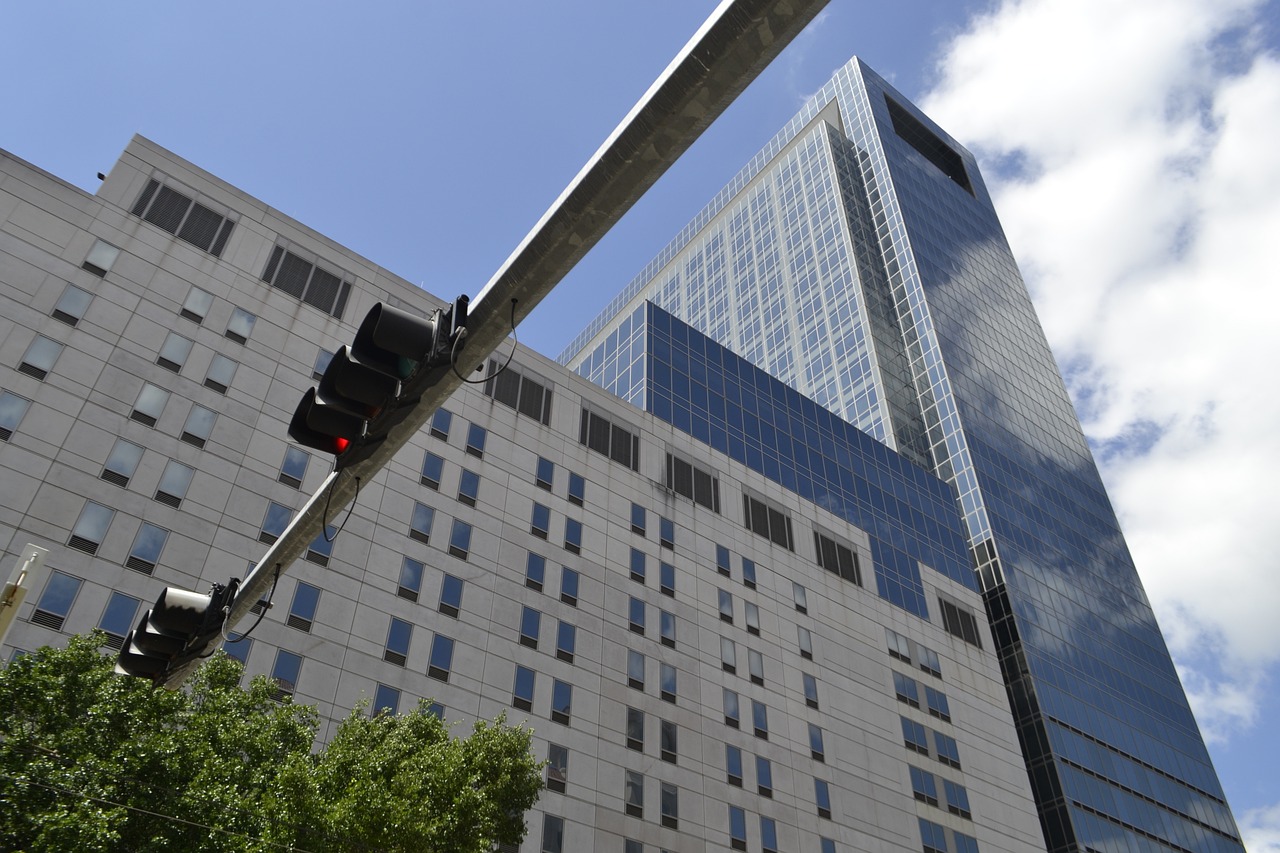
Types of Emergencies
When it comes to emergencies, the landscape is as diverse as it is daunting. From the fury of nature to the unexpected twists of public health crises, understanding the we might face is crucial for effective preparedness. Each emergency has its unique characteristics, and recognizing these can help you tailor your response strategies. Imagine walking into a storm without knowing its strength—it's a recipe for chaos! So, let's dive into the different types of emergencies that can impact our lives.
Emergencies can generally be categorized into two broad categories: natural disasters and public health emergencies. Each of these categories encompasses various specific events that require different preparedness approaches. For instance, while a hurricane may have clear warning signs and evacuation routes, an earthquake can strike without a moment's notice. This unpredictability makes it even more essential to be prepared.
Natural disasters are perhaps the most visible type of emergency. They can be sudden and catastrophic, often leaving communities in ruins. Understanding the various types of natural disasters can help individuals and communities develop adequate response strategies. Here are some examples:
- Hurricanes: These massive storms can unleash winds that exceed 150 mph, flooding, and widespread destruction.
- Earthquakes: Often referred to as 'the silent killer,' earthquakes can occur without warning, leading to severe damage and loss of life.
- Floods: Heavy rainfall or storm surges can cause rivers to overflow, inundating homes and infrastructure.
Each of these disasters requires unique preparations. For example, while you might stock up on bottled water and non-perishable food for a hurricane, securing your home against tremors is vital for earthquake preparedness. The key takeaway? Know what type of disaster is most likely to occur in your area and prepare accordingly.
On the other hand, public health emergencies present a different kind of challenge. These situations often unfold over time, and their impact can be widespread. Think about the recent global pandemic; it required not just individual preparedness but also community-wide strategies to mitigate risks. Public health emergencies can include:
- Pandemics: Outbreaks of infectious diseases that spread rapidly across communities.
- Biological threats: These can stem from intentional acts, like bioterrorism, or accidental releases of harmful pathogens.
- Food safety crises: Contaminated food supplies can lead to widespread illness and require immediate public health responses.
In these scenarios, staying informed through reliable health advisories is essential. Knowledge is power, especially when it comes to understanding how to protect yourself and your loved ones from potential health threats. Just as you wouldn't go into battle without armor, you shouldn't face a public health emergency without the proper information and resources.
In summary, understanding the types of emergencies we may encounter can significantly enhance our preparedness efforts. Whether it's a natural disaster or a public health crisis, being informed allows us to take proactive steps to protect ourselves and our communities. So, take a moment to evaluate the risks specific to your area and make a plan. Your future self will thank you!
Q: What should I do first if I receive an emergency warning?
A: Your first step should be to stay calm and gather as much information as possible. Check local news sources for updates and follow any official guidelines provided by emergency services.
Q: How can I prepare for a natural disaster?
A: Start by creating an emergency kit that includes essential supplies like water, food, medications, and important documents. Familiarize yourself with local emergency plans and evacuation routes.
Q: What are the signs of a public health emergency?
A: Signs may include sudden outbreaks of illness, widespread reports of food contamination, or announcements from health authorities about emerging health threats.

Natural Disasters
This article discusses the importance of advisory warnings and the steps individuals and communities can take to prepare for emergencies effectively.
Advisory warnings provide crucial information about potential hazards. Understanding these warnings can help individuals make informed decisions to protect themselves and their families during emergencies.
Emergencies can vary widely, from natural disasters to public health crises. Recognizing the different types of emergencies helps individuals prepare appropriately for each situation.
Natural disasters are unpredictable events that can disrupt lives and communities in an instant. They can range from hurricanes and earthquakes to floods and wildfires. Each type of disaster has its own unique characteristics and risks, making it essential for individuals to understand the nature of these events. Knowledge can be your best friend when it comes to preparedness. For instance, consider a hurricane: its sheer power can uproot trees and cause widespread flooding, but knowing when to evacuate can save lives. Similarly, earthquakes can strike without any warning, reminding us of the importance of securing our homes and having a plan in place.
Here are some common types of natural disasters:
- Hurricanes: These massive storms can bring torrential rain, high winds, and storm surges, leading to severe flooding and destruction.
- Earthquakes: Sudden ground shaking can cause buildings to collapse and landslides to occur, often without any prior warning.
- Floods: Heavy rainfall or rapid snowmelt can lead to flooding, posing significant risks to life and property.
- Wildfires: Dry conditions and strong winds can cause fires to spread rapidly, threatening homes and natural resources.
Understanding these disasters is just the first step. It's crucial to stay informed about local risks and to develop a response strategy tailored to your community's specific needs. For example, if you live in a hurricane-prone area, knowing the local evacuation routes and having a plan in place can make a world of difference. On the other hand, if you reside in an earthquake zone, securing heavy furniture and creating a family emergency plan can help mitigate the risks. The key is to be proactive rather than reactive.
Hurricanes can cause devastating damage. Understanding hurricane warnings and evacuation plans is essential for ensuring safety during these powerful storms. When a hurricane is approaching, staying tuned to local news and weather updates is vital. These sources provide real-time information about the storm's path and intensity. Additionally, communities often have designated shelters and evacuation routes, which residents should familiarize themselves with ahead of time. Remember, during a hurricane, every second counts, and having a plan can be the difference between safety and disaster.
Earthquakes strike without warning, making preparedness vital. Learning how to secure your home and create an emergency kit can save lives during an earthquake. It’s essential to identify safe spots in your home, such as under sturdy furniture or against interior walls, where you can take cover during a quake. Moreover, having an emergency kit ready with essential supplies—such as water, non-perishable food, and first aid items—can ensure that you and your family are prepared for the aftermath. Remember, the ground may shake, but your preparedness can keep you steady.
Public health emergencies, including pandemics, require a different kind of preparedness. Staying informed about health advisories can help mitigate risks during such events.
An effective emergency plan outlines steps to take during various emergencies. Developing a plan ensures that everyone knows their roles and responsibilities in a crisis.
Effective communication is crucial during emergencies. Establishing communication strategies can help families stay connected and informed when disaster strikes.
Knowing evacuation routes and procedures can save lives. Communities should regularly review and practice evacuation plans to ensure readiness in case of an emergency.
An emergency kit is essential for survival during crises. Understanding what to include in your kit can make a significant difference in your preparedness efforts.
Basic supplies such as water, food, and first aid items are critical. Knowing how much to store and for how long can enhance your emergency readiness.
Families with special needs must consider unique requirements in their emergency kits. Tailoring your kit ensures that everyone’s needs are met during a crisis.
Q: What should I do first when a natural disaster warning is issued?
A: Stay calm and gather information from reliable sources like local news or emergency services. Follow any evacuation orders and prepare your emergency kit.
Q: How can I ensure my family is prepared for different types of emergencies?
A: Create a comprehensive emergency plan that includes communication strategies, evacuation routes, and an emergency kit tailored to your family's needs.
Q: Are there specific supplies I should have in my emergency kit?
A: Yes, your emergency kit should include water, non-perishable food, a flashlight, batteries, a first aid kit, and any necessary medications.

Hurricanes
Hurricanes are among the most powerful and destructive forces of nature. These massive storms can wreak havoc on communities, uproot families, and cause extensive damage to infrastructure. Understanding the nature of hurricanes is crucial for anyone living in areas prone to these storms. When a hurricane warning is issued, it signals that a storm is approaching and that residents need to take immediate action to ensure their safety. But what exactly should you do when a hurricane is on its way?
First and foremost, it’s essential to stay informed. Keeping track of weather updates through reliable sources such as the National Weather Service can provide you with real-time information about the storm's path and intensity. If you hear that a hurricane is on the way, you should act quickly. Prepare your home by securing windows and doors, and consider using storm shutters if you have them. This step is vital because flying debris can cause significant damage to your property and put your family at risk.
Additionally, understanding evacuation routes and having a plan in place is critical. During a hurricane, local authorities may issue evacuation orders, and knowing where to go can save lives. It's beneficial to familiarize yourself with the nearest shelters and the safest routes to reach them. Make sure to have a family communication plan that outlines how to stay in touch if you are separated during an evacuation. This could include designating a meeting place and sharing contact information with all family members.
Moreover, assembling an emergency kit is a vital part of hurricane preparedness. Your kit should include:
- Water: At least one gallon per person per day for at least three days.
- Non-perishable food: A three-day supply of items like canned goods, granola bars, and dried fruit.
- First aid supplies: Include bandages, antiseptics, and any necessary medications.
- Flashlights and batteries: Power outages are common during hurricanes.
- Important documents: Keep copies of identification, insurance policies, and medical records in a waterproof container.
Finally, after the storm has passed, it's crucial to remain cautious. Hazards such as downed power lines, flooded areas, and unstable buildings can pose serious risks. Always wait for official announcements before returning to your home, and be sure to assess any damage carefully. Remember, preparedness is not just about weathering the storm; it’s about having the resilience to rebuild and recover afterward.
Q: What should I do if a hurricane is approaching?
A: Stay informed through weather updates, secure your home, and follow evacuation orders if issued. Prepare an emergency kit and have a family communication plan in place.
Q: How can I protect my property from hurricane damage?
A: Secure windows and doors, use storm shutters, and remove any outdoor furniture or decorations that could become projectiles in high winds.
Q: What items should I include in my emergency kit?
A: Your emergency kit should contain water, non-perishable food, first aid supplies, flashlights, batteries, and important documents.
Q: How can I find evacuation routes?
A: Familiarize yourself with local evacuation routes by checking maps provided by local authorities or emergency management agencies. It's also wise to have a GPS or a physical map on hand.
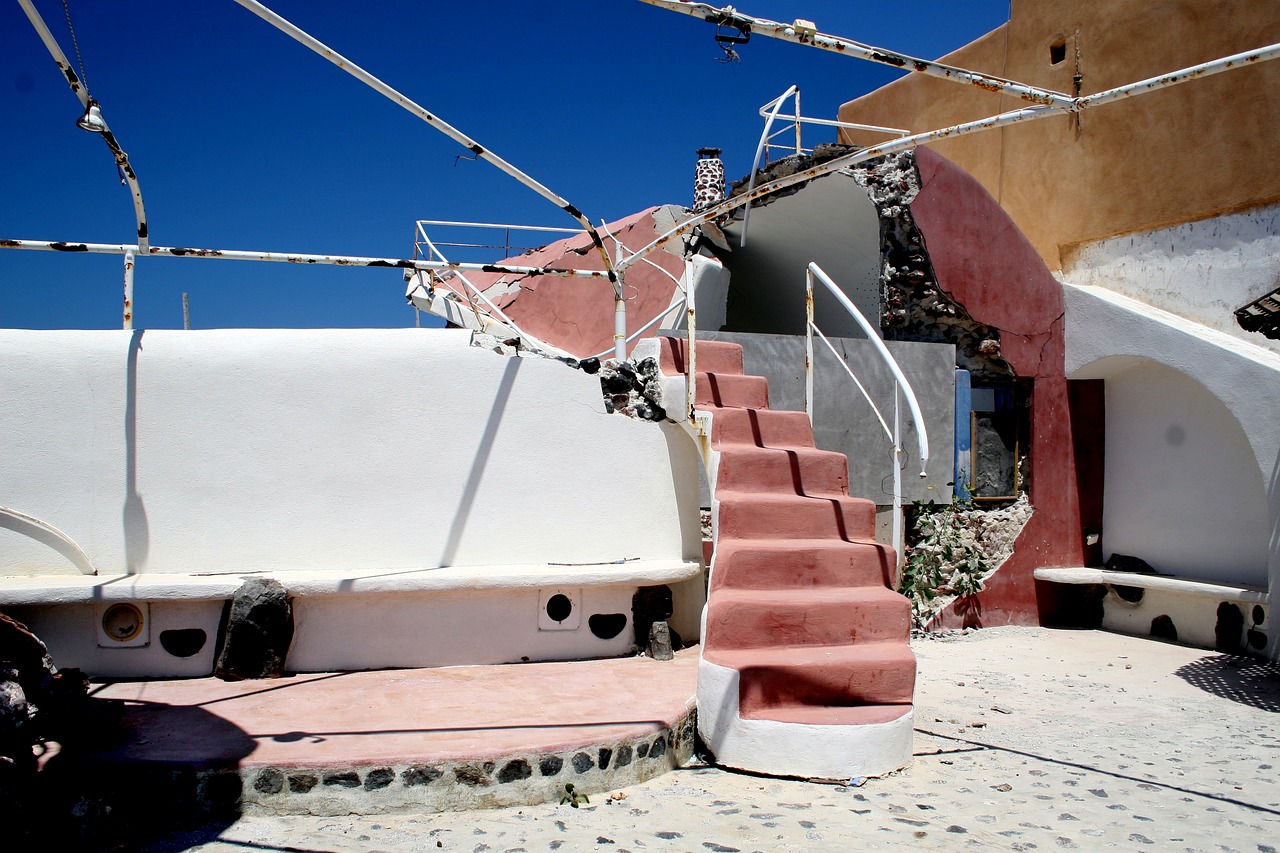
Earthquakes
Earthquakes are one of nature's most unpredictable phenomena, striking suddenly and often without warning. Imagine living your life, going through your daily routine, and then—bam!—the ground shakes beneath you. This can be a terrifying experience, and understanding how to prepare for such events is crucial. The impact of an earthquake can range from minor tremors that barely rattle your coffee cup to catastrophic quakes that can collapse buildings and disrupt entire communities. Therefore, knowing how to protect yourself and your loved ones is not just wise; it's essential.
Preparation is your best defense against earthquakes. It’s like having an umbrella ready before the rain starts; you might not need it every day, but when you do, you’ll be glad you have it. Start by securing heavy furniture and appliances in your home. Fasten bookshelves to the walls, and store heavy items on lower shelves. This simple act can prevent dangerous items from toppling over during a quake, reducing the risk of injury. Additionally, you should be aware of the safest spots in your home during an earthquake. The “Drop, Cover, and Hold On” technique is a widely recommended practice. It’s important to drop to your hands and knees, take cover under a sturdy piece of furniture, and hold on until the shaking stops.
Another vital aspect of earthquake preparedness is creating an emergency kit. This kit should contain essential supplies that you may need in the aftermath of a quake. Consider including:
- Water: One gallon per person per day for at least three days.
- Non-perishable food: Enough for at least three days.
- First aid kit: To treat minor injuries.
- Flashlight and extra batteries: For when the power goes out.
- Whistle: To signal for help if you are trapped.
It’s also crucial to have a family communication plan. Think about it: when chaos strikes, how will you find each other? Establish a meeting point outside your home, and make sure everyone knows how to reach it. Designate a person outside your area whom family members can contact to check in. This way, if you are separated, you have a reliable way to communicate and ensure everyone is safe.
In summary, while earthquakes can be frightening and unpredictable, being prepared can significantly mitigate their impact. By taking proactive steps—like securing your home, creating an emergency kit, and establishing a communication plan—you can protect yourself and your loved ones. Remember, preparedness is not just about having the right supplies; it’s about having the right mindset. So, take a moment today to think about how you would respond if the ground began to shake. The time to prepare is now, not when the earthquake strikes.
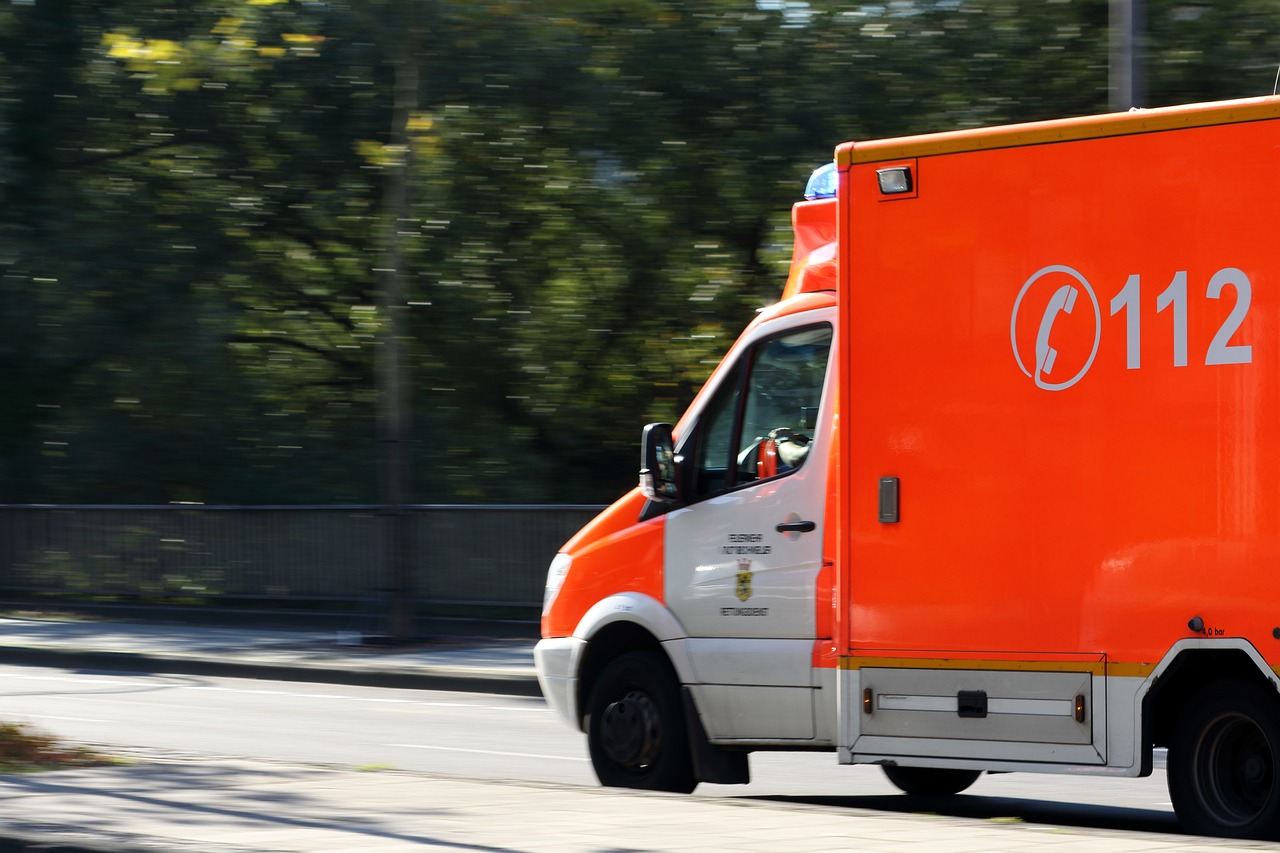
Public Health Emergencies
Public health emergencies are unique in their nature and impact. Unlike natural disasters, which often come with visual warnings, public health crises can creep up on us quietly, often leaving us unprepared. Think about it: one day, everything seems normal, and the next, a pandemic or outbreak has turned our routines upside down. These situations require a different kind of vigilance and preparedness. Being informed and ready can mean the difference between chaos and calm during such times.
When we talk about public health emergencies, we refer to events like pandemics, disease outbreaks, and even bioterrorism threats. Each of these situations presents its own set of challenges and requires us to adapt quickly. For instance, during a pandemic, information spreads as rapidly as the virus itself, making it crucial to stay updated on health advisories from reliable sources. Ignoring these advisories can lead to misinformation, which can exacerbate the situation.
So, how can we prepare for these types of emergencies? Here are some essential steps to consider:
- Stay Informed: Follow local health departments and trusted news sources. Knowledge is power, especially when it comes to understanding the nature of the threat.
- Vaccinations: Keeping up with vaccinations can protect you and your community from serious diseases. Make sure to check if you and your family are up to date.
- Community Resources: Familiarize yourself with local resources, such as health clinics and emergency services that can provide assistance during a health crisis.
Moreover, mental health is often overlooked during public health emergencies. The stress and anxiety that come with uncertainty can be overwhelming. It's essential to have strategies in place to support mental well-being, whether through community support, hotlines, or simply staying connected with friends and family. Remember, it’s okay to seek help when you need it—mental health is just as important as physical health.
Lastly, consider the role of technology in managing public health emergencies. From contact tracing apps to telehealth services, technology can provide valuable support. These tools can help keep us informed and connected, allowing us to navigate crises more effectively.
In summary, public health emergencies require a proactive approach. By staying informed, taking preventive measures, and supporting one another, we can better prepare ourselves and our communities for whatever challenges may come our way.
- What should I do if I feel unwell during a public health emergency? It's important to contact your healthcare provider for guidance and to avoid public places to prevent spreading illness.
- How can I support my community during a public health crisis? Volunteer with local organizations, share accurate information, and help those in need, especially vulnerable populations.
- Where can I find reliable information during an emergency? Always refer to official sources like the CDC, WHO, or your local health department for accurate updates and guidelines.
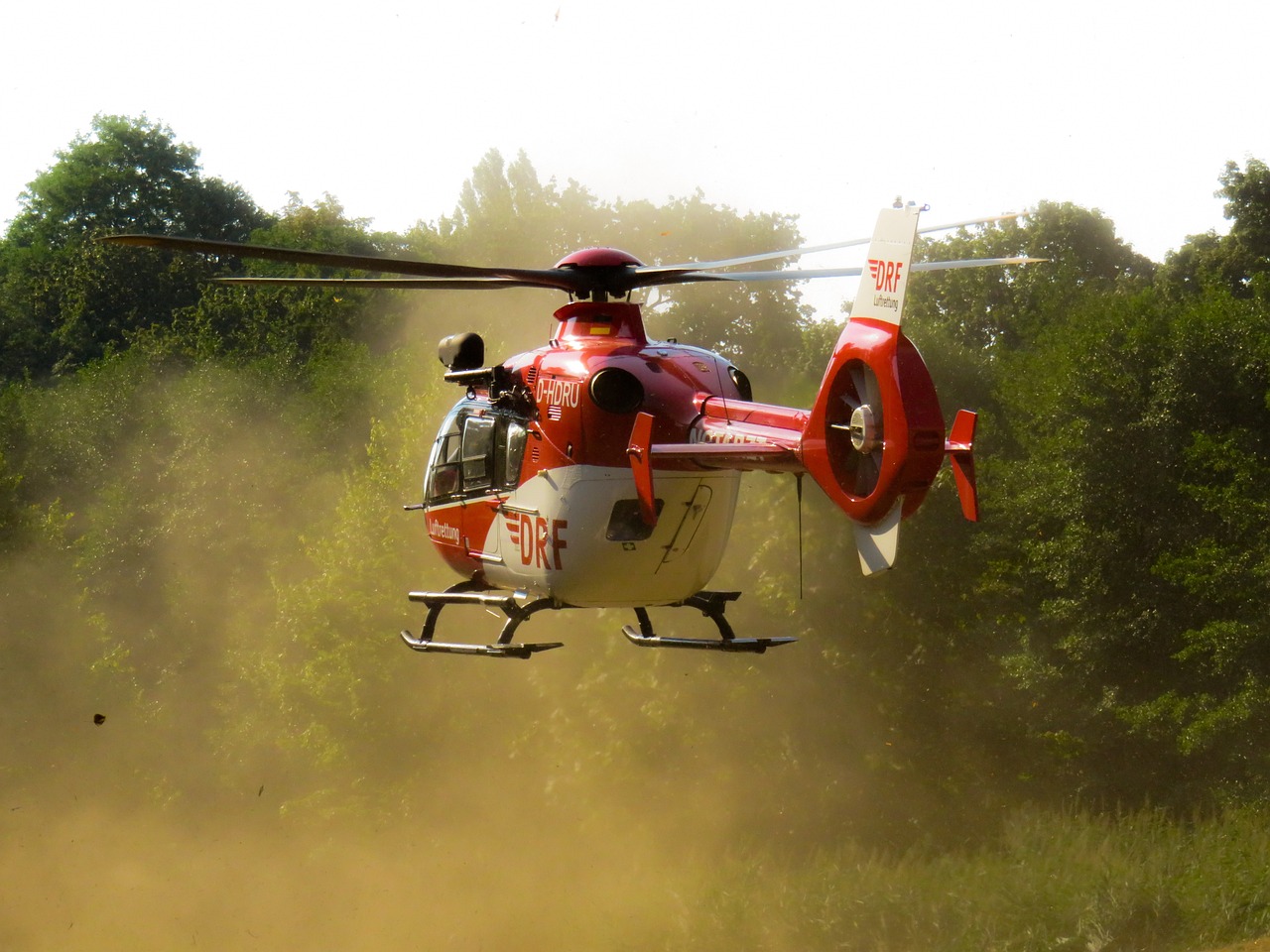
Creating an Emergency Plan
When it comes to emergencies, having a solid plan can be the difference between chaos and calm. Think of your emergency plan as a roadmap; without it, you might find yourself lost in the turmoil of a crisis. So, how do you create a plan that works for you and your family? It starts with identifying potential emergencies that could affect your area, whether it’s a natural disaster like a hurricane or a public health crisis like a pandemic. Understanding these risks allows you to tailor your plan to meet your specific needs.
Once you’ve identified the types of emergencies you might face, it’s time to outline the steps everyone should take. This includes assigning roles and responsibilities to each family member. For instance, one person could be in charge of grabbing the emergency kit, while another could ensure that pets are secured. By clearly defining these roles, you can minimize confusion when every second counts.
Communication is another crucial aspect of your emergency plan. In the frenzy of an emergency, it’s easy to lose touch with loved ones. Establishing a communication strategy can keep everyone connected. Consider designating a family member outside your immediate area as a point of contact. This way, if local lines are down, you can still relay information through a third party. It’s like having a lifeline in a storm!
Additionally, knowing evacuation routes and procedures is vital. Familiarize yourself with the quickest and safest ways to exit your home and community. It’s not just about knowing where to go; it’s also about practicing these routes. Regularly review your evacuation plan with your family and conduct drills to ensure everyone knows what to do when the time comes. This practice can significantly reduce panic and confusion during a real emergency.
To help you get started, here’s a simple table outlining key components of an effective emergency plan:
| Component | Description |
|---|---|
| Identify Risks | Assess potential emergencies that could affect your area. |
| Assign Roles | Designate responsibilities to each family member. |
| Communication Plan | Establish a method for staying in touch during a crisis. |
| Evacuation Routes | Know and practice the safest ways to evacuate. |
In conclusion, creating an emergency plan is not just a task; it’s an essential part of ensuring your family’s safety. By recognizing potential emergencies, assigning roles, establishing communication methods, and knowing evacuation routes, you’re setting your family up for success when it matters most. Remember, in an emergency, knowledge is power, and preparation is your best ally!
- What should I include in my emergency plan?
Your emergency plan should include identified risks, assigned roles, communication strategies, and evacuation routes.
- How often should I review my emergency plan?
It’s a good idea to review your emergency plan at least once a year or whenever there are significant changes in your family or living situation.
- What if my family members are not together during an emergency?
Having a designated family contact outside your area can help you stay connected and relay important information.
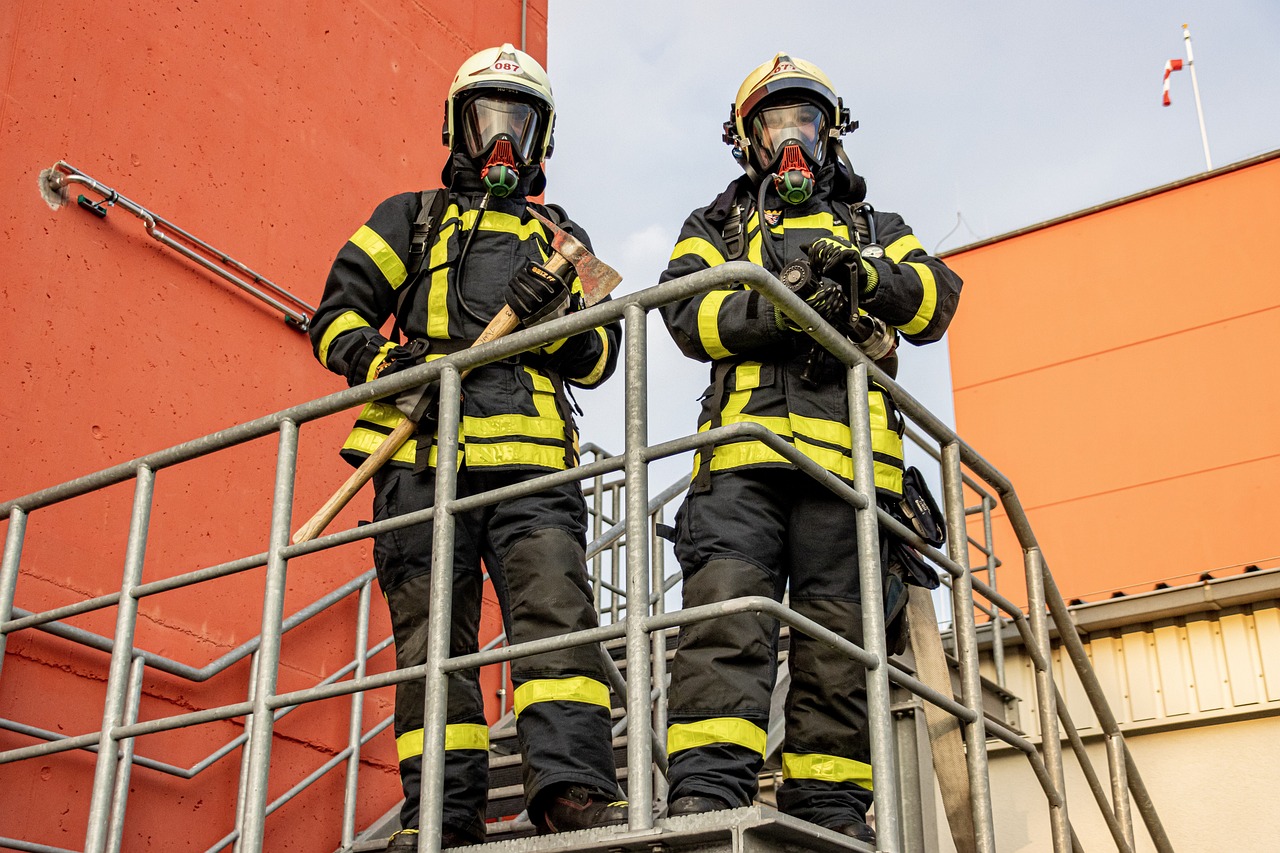
Communication Strategies
When disaster strikes, effective communication can be the lifeline that keeps families and communities connected. Imagine being in the midst of chaos, with sirens blaring and uncertainty looming. In such moments, having a solid communication strategy is not just a luxury; it’s a necessity. The key is to establish clear channels of communication before an emergency occurs, ensuring that everyone knows how to reach one another when it matters most.
First and foremost, consider setting up a designated emergency contact for your family. This person should be someone who lives outside your immediate area, as local lines may be down or congested. By having a point of contact, you can relay information and check in on each other’s safety. It’s also wise to create a communication plan that outlines how you will reach each other during an emergency. This could include using text messages, social media, or even old-fashioned landlines if they are still available.
In addition to personal strategies, communities can enhance their communication effectiveness through various means. For instance, local governments often use emergency alert systems to disseminate information quickly. These systems can send out alerts via text, email, or phone calls about impending disasters or safety instructions. Signing up for these services can keep you informed and prepared. It’s important to also stay connected with local news outlets, as they provide real-time updates and critical information during emergencies.
Moreover, consider utilizing social media platforms as a tool for communication. During a crisis, social media can be a powerful resource for sharing updates, checking on loved ones, and finding support. However, it’s crucial to verify information before sharing to avoid spreading misinformation, which can create panic or confusion.
Finally, don’t underestimate the value of regular family meetings to discuss and rehearse your communication strategies. These meetings can serve as a platform to review your emergency plan, ensuring everyone knows their roles and responsibilities. Practicing these strategies can make a significant difference when the time comes. After all, in the face of an emergency, being prepared is half the battle.
- What should I do if I can't reach my family during an emergency?
If you can't reach your family, try to contact your designated emergency contact. If that fails, use social media to send messages or check in. Stay calm and wait for updates. - How can I ensure my emergency contact is always reachable?
Choose someone who is tech-savvy and lives far enough away to avoid the same local disruptions. Regularly check in with them to ensure they are still comfortable being your emergency contact. - What types of information should I share during an emergency?
Share your location, status (safe or in danger), and any immediate needs you may have. Keeping messages concise helps ensure your information is clear and actionable.

Evacuation Procedures
When the sirens blare or the alerts flash across your screen, knowing the right can be the difference between safety and chaos. Imagine being in a crowded room when someone yells "fire!" Panic can set in quickly, but if you have a plan, you can navigate through the confusion. First and foremost, you should familiarize yourself with the evacuation routes in your area. Many communities have designated routes that are safer and more efficient during emergencies. It's crucial to know not just the quickest way out, but also alternative routes in case of roadblocks.
In addition, communities often conduct evacuation drills. Participating in these drills can help you understand how to react when an actual emergency occurs. It’s like practicing for a play; if you know your lines and cues, you can perform better on the big night. Similarly, regular practice of evacuation procedures can make the real thing feel more manageable.
When planning your evacuation, consider the following essential steps:
- Identify the nearest exits in your home or workplace.
- Know where to meet your family or group after evacuating.
- Keep a charged mobile phone with emergency contacts saved.
Another vital aspect is transportation. If you rely on public transport, know the schedules and routes. If you have a vehicle, ensure it’s fueled and ready to go. In the heat of the moment, you don’t want to find yourself scrambling for gas or stuck in traffic. Make a checklist of items to grab before you leave—important documents, medications, and even your pet should be part of this plan. Having a pre-packed emergency bag can save precious time.
Moreover, always stay informed through local news and emergency services. They provide real-time updates that can guide your evacuation decisions. In some cases, evacuation orders may change quickly, so being in the loop is essential. If you are ordered to evacuate, don’t hesitate. Leaving early can help you avoid the rush and ensure that you have time to gather your essentials.
Finally, don’t forget to communicate your plans with family and friends. Let them know where you are headed and how you can be reached. This not only helps keep everyone informed but also provides peace of mind during uncertain times. Think of it as a lifeline; in the chaos of an emergency, knowing that someone is aware of your whereabouts can be incredibly reassuring.
In summary, having a robust evacuation plan is not just about knowing the exits; it's about preparation, communication, and staying informed. By taking these proactive steps, you can face emergencies with confidence and composure.
Q: What should I do if I have to evacuate with pets?
A: Include your pets in your evacuation plan. Prepare a pet emergency kit with food, water, and any necessary medications. Make sure your pets are wearing identification tags, and consider having a pet carrier ready for transport.
Q: How can I stay informed during an emergency?
A: Use multiple sources of information, including local news channels, social media updates, and official emergency management websites. It's also beneficial to have a battery-powered radio for updates if the power goes out.
Q: What if I have special medical needs?
A: If you have specific medical requirements, ensure you have a detailed list of your medications and any necessary medical equipment. Inform your family or caregivers about your needs, and consider including a medical alert tag in your emergency kit.
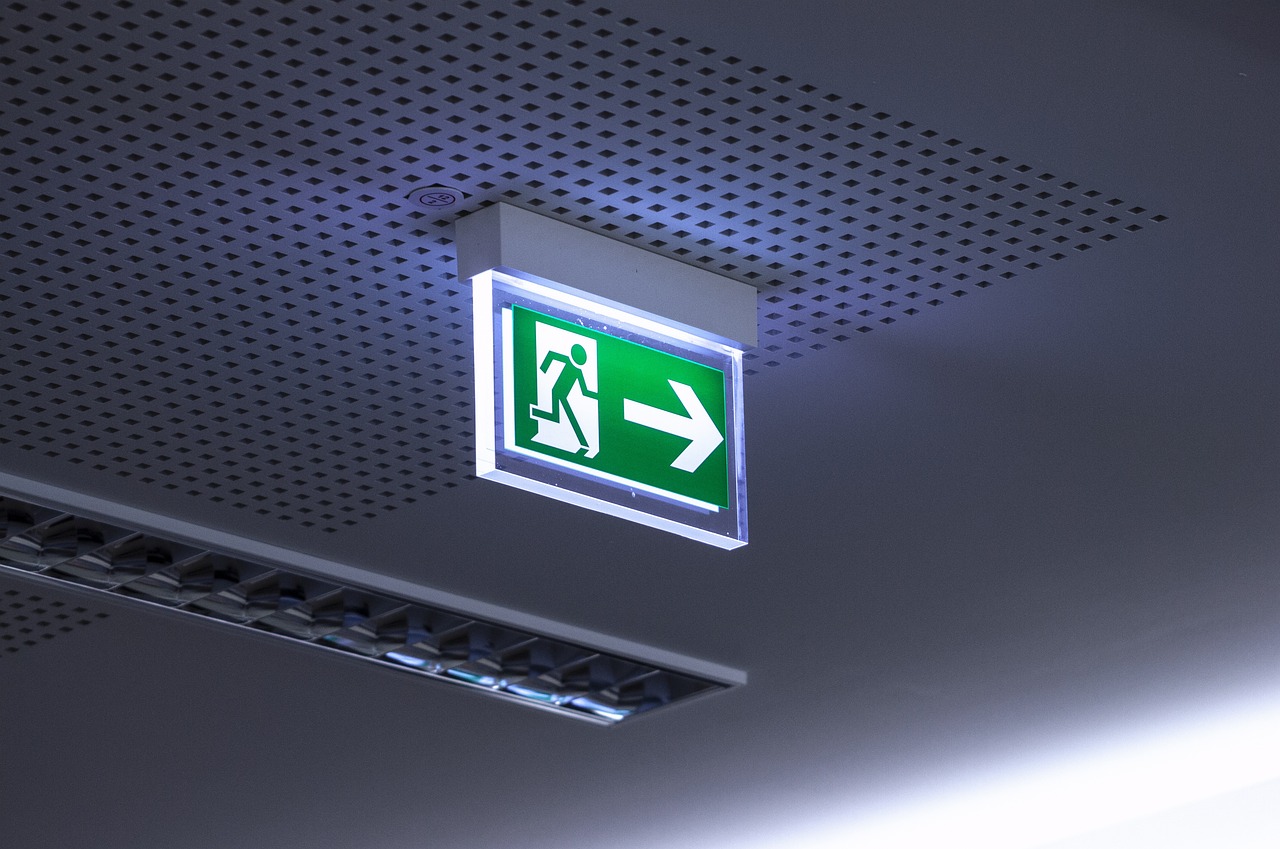
Emergency Kits: What to Include
When it comes to emergencies, having an emergency kit can be a literal lifesaver. Think of it as your personal treasure chest filled with essential supplies that can keep you and your loved ones safe during a crisis. But what exactly should you include in this kit? The answer can vary based on your specific needs, location, and the types of emergencies you might face. However, there are some basic supplies that everyone should consider.
First and foremost, water is a non-negotiable item. Experts recommend having at least one gallon of water per person per day for at least three days. This means if you have a family of four, you should store at least 12 gallons! Water is essential not just for drinking but also for sanitation. Next, you’ll want to pack non-perishable food. Canned goods, energy bars, and dried fruits are excellent choices because they have a long shelf life and require no cooking. Aim for a three-day supply, and remember to cater to any dietary restrictions your family may have.
In addition to food and water, a well-rounded emergency kit should also include a first aid kit. This kit should contain bandages, antiseptic wipes, pain relievers, and any necessary prescription medications. It’s vital to ensure that everyone’s health needs are met. Speaking of health, don’t forget to include a multi-tool or a Swiss Army knife. This handy gadget can serve multiple purposes, from opening cans to making small repairs.
Now, let’s talk about special needs considerations. If you or someone in your family has specific medical conditions, you’ll need to tailor your kit accordingly. For example, if you have a baby, include formula, diapers, and baby food. For seniors, consider including items like hearing aids and extra glasses. It’s all about making sure that everyone’s unique needs are met.
To help you better understand what to include in your emergency kit, here’s a quick reference table:
| Item | Quantity | Notes |
|---|---|---|
| Water | 1 gallon per person per day (3 days) | Store in a cool, dark place |
| Non-perishable Food | 3-day supply | Include a variety of items |
| First Aid Kit | 1 kit | Check for expired items regularly |
| Multi-tool | 1 | Versatile for various tasks |
| Special Needs Items | As needed | Customize based on family requirements |
Finally, don’t forget to include a flashlight with extra batteries and a battery-powered or hand-crank radio to stay updated on emergency information. You might also want to add a whistle to signal for help, as well as a map of your local area in case you need to navigate without GPS. Remember, the key to an effective emergency kit is not just having the right items but also ensuring that they are easily accessible and regularly checked for expiration dates.
- How often should I check my emergency kit? It's advisable to check your kit at least every six months to replace expired items and update any necessary supplies.
- Can I store my emergency kit in my car? Yes, but be cautious of the temperature extremes in your area. Some items may not fare well in extreme heat or cold.
- What if I have pets? Include pet food, water, and any necessary medications for your furry family members in your emergency kit.

Basic Supplies
When it comes to preparing for emergencies, having the right can be the difference between chaos and calm. Imagine facing a crisis without access to food, water, or medical supplies; it’s a daunting thought, isn’t it? To ensure that you and your loved ones are ready for any situation, it’s essential to assemble a well-rounded emergency kit. But what exactly should you include in this kit? Let’s break down the essentials.
First and foremost, water is your top priority. It’s recommended that each person has at least one gallon of water per day for at least three days. This means for a family of four, you should stock up on a minimum of 12 gallons! Water is vital not just for drinking, but also for sanitation purposes. Next, you’ll want to think about food. Non-perishable items are the best choice here. Foods like canned goods, granola bars, and dried fruits can sustain you during an emergency. Aim for at least a three-day supply of food that doesn’t require cooking or refrigeration.
Now, let’s talk about medical supplies. A well-stocked first aid kit is crucial. It should include items like bandages, antiseptic wipes, pain relievers, and any prescription medications you or your family members might need. Additionally, don’t forget personal hygiene items such as soap, hand sanitizer, and toilet paper. Keeping clean can help prevent illness during stressful times.
It’s also wise to consider other essential items that can enhance your safety and comfort. For instance, having a flashlight with extra batteries can be a lifesaver during power outages. A multi-tool, a whistle, and a blanket can also come in handy. If you have pets, ensure you have supplies for them as well, including food and water. Remember, emergencies can impact everyone in the household, including our furry friends!
To help you visualize what to pack, here’s a simple table outlining the basic supplies you should consider:
| Supply | Quantity | Notes |
|---|---|---|
| Water | 1 gallon per person per day for 3 days | Store in a cool, dark place |
| Non-perishable food | 3-day supply | Canned goods, granola bars, etc. |
| First aid kit | 1 kit | Include personal medications |
| Flashlight | 1 | Extra batteries recommended |
| Multi-tool | 1 | Useful for various tasks |
| Blanket | 1 per person | For warmth and comfort |
| Pet supplies | As needed | Food, water, and medications for pets |
Ultimately, the key to effective emergency preparedness is to think ahead and plan accordingly. By assembling a comprehensive emergency kit filled with these basic supplies, you’re not just preparing for the worst; you’re taking proactive steps to ensure that you and your loved ones can weather any storm that comes your way. And remember, it’s always better to have it and not need it than to need it and not have it!
- How often should I check my emergency kit? It’s advisable to check your kit at least twice a year to ensure that supplies are up-to-date and in good condition.
- What if I have special dietary needs? Make sure to include food items that meet your dietary requirements. Consider alternatives that are non-perishable.
- Can I use regular household items in my emergency kit? Yes, many household items can be repurposed for your kit, but ensure they are suitable for emergency situations.
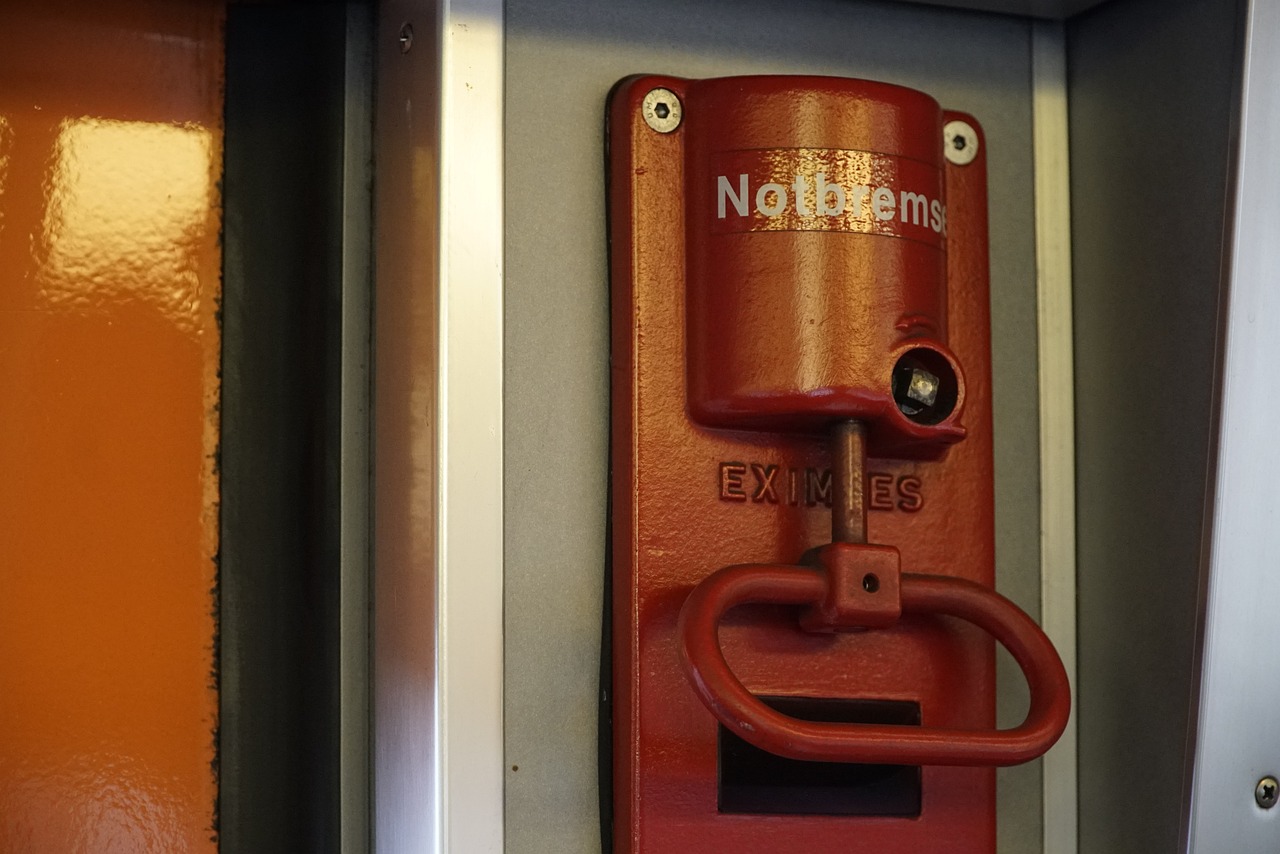
Special Needs Considerations
When it comes to emergency preparedness, are crucial. Families with members who have disabilities, chronic illnesses, or other specific requirements must tailor their emergency plans and kits to ensure everyone's safety and comfort. It's not just about having the basics; it's about being proactive and anticipating unique challenges that may arise during a crisis.
For instance, individuals who rely on medication should have a sufficient supply stored in their emergency kits. This means not only having enough for a few days but also considering how long it might take to access pharmacies or healthcare facilities during and after a disaster. Furthermore, it's essential to keep medications in their original containers, which include important information such as dosage and prescribing instructions. To aid in this, families can create a medication inventory that outlines each person's medications, dosages, and refill information.
Another significant consideration is mobility aids. If someone in your household uses a wheelchair, walker, or other assistive devices, ensure these are readily accessible and in good working condition. In the event of an evacuation, having a plan for transporting these aids is vital. You might even want to consider a mobility kit that includes items like a portable ramp, extra batteries for powered devices, and any necessary repair tools.
In addition, communication needs should not be overlooked. For those who are deaf or hard of hearing, having visual alerts or communication devices is essential. Likewise, if someone has cognitive impairments, it may be beneficial to develop simple, easy-to-follow instructions and visual aids that can help them understand what to do during an emergency.
Lastly, consider the emotional and psychological needs of your family members. Emergencies can be incredibly stressful, especially for those with special needs. Having comforting items, such as favorite toys, blankets, or sensory tools, can provide much-needed reassurance during chaotic times. Remember, preparedness is not just about physical survival; it’s also about maintaining emotional well-being.
To summarize, here are some key points to consider when preparing for emergencies with special needs in mind:
- Medication Management: Keep an inventory of medications and ensure you have enough supply.
- Mobility Aids: Ensure accessibility and transport plans for assistive devices.
- Communication Tools: Prepare visual aids and devices for those with hearing or cognitive challenges.
- Emotional Support: Include comforting items in your emergency kit.
By taking these special needs considerations into account, families can create a more comprehensive and effective emergency preparedness plan. Remember, the goal is to ensure that everyone, regardless of their needs, feels safe and supported during any crisis.
Q: What should I include in an emergency kit for someone with special needs?
A: Include essential medications, mobility aids, communication devices, and comforting items. Tailor the kit based on specific needs.
Q: How can I ensure my family member with special needs knows what to do in an emergency?
A: Create simple, easy-to-follow instructions and practice emergency drills regularly. Use visual aids to enhance understanding.
Q: Are there resources available for families with special needs regarding emergency preparedness?
A: Yes, organizations like the American Red Cross and local disability advocacy groups often provide resources and guidelines tailored to special needs preparedness.
Frequently Asked Questions
- What are advisory warnings?
Advisory warnings are alerts issued by authorities to inform the public about potential hazards or emergencies. They provide crucial information that helps individuals make informed decisions to protect themselves and their families.
- What types of emergencies should I be prepared for?
Emergencies can range from natural disasters like hurricanes and earthquakes to public health crises such as pandemics. Being aware of these different types allows you to tailor your preparedness efforts accordingly.
- How can I prepare for a hurricane?
To prepare for a hurricane, it's essential to understand hurricane warnings, have a solid evacuation plan, and ensure your home is secured. Stocking up on supplies and staying informed through reliable sources can also make a significant difference.
- What should I include in my emergency kit?
Your emergency kit should include basic supplies such as water, non-perishable food, a first aid kit, flashlights, batteries, and any necessary medications. Tailoring your kit to meet the specific needs of your family is also crucial.
- How can families stay connected during an emergency?
Establishing clear communication strategies is key. This could involve setting up a designated meeting spot, using group texts, or having a family emergency contact who lives outside the affected area.
- What special considerations should I make for family members with special needs?
Families with special needs should consider unique requirements such as medications, mobility aids, or dietary restrictions when preparing their emergency kits. It's important to ensure that all family members can be supported during a crisis.
- Why is it important to have an emergency plan?
An emergency plan is crucial because it outlines specific steps everyone should take during various emergencies. Having a plan ensures that all family members are aware of their roles and responsibilities, which can save lives.
- How often should I review my emergency plan?
It's a good idea to review your emergency plan at least once a year or whenever there are significant changes in your family situation or living conditions. This ensures that everyone is up to date and prepared for any emergency.

